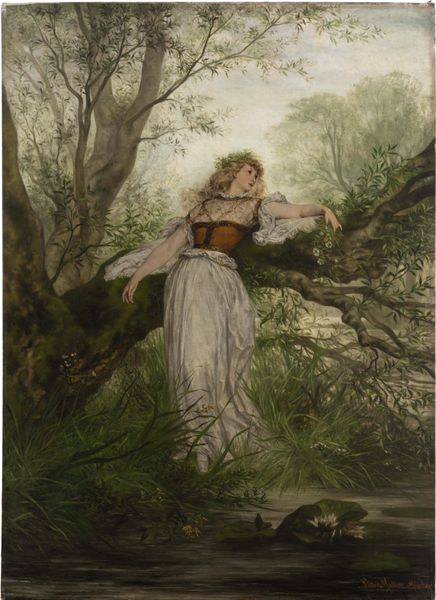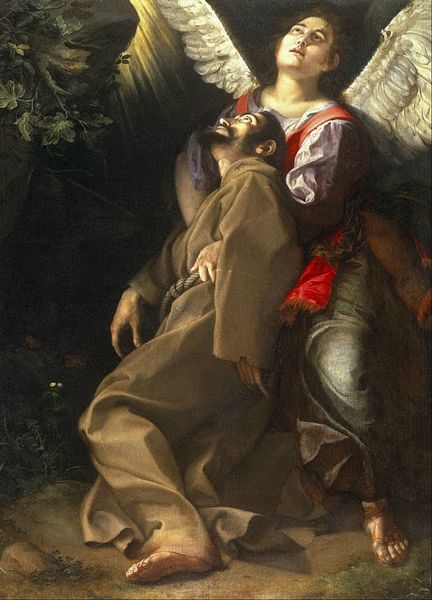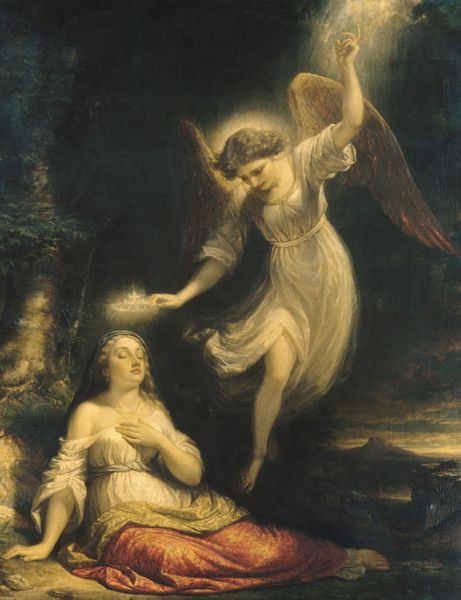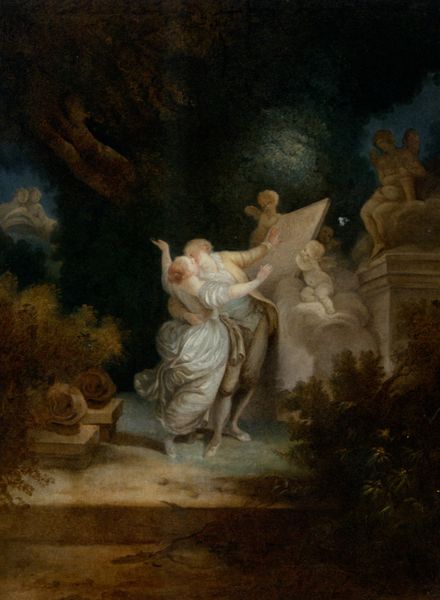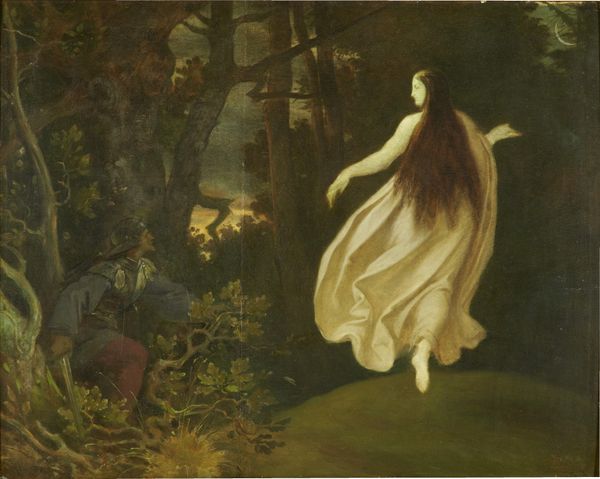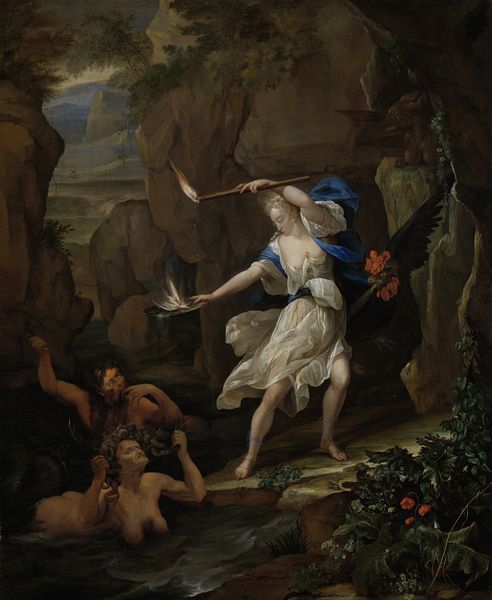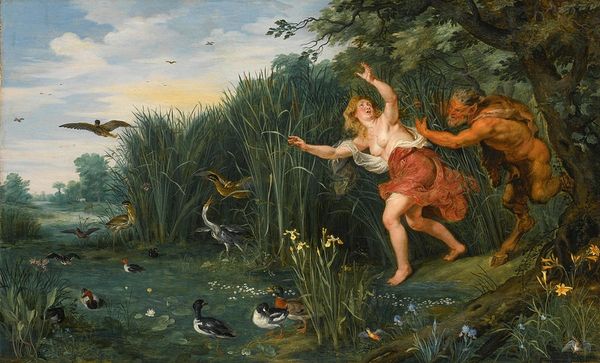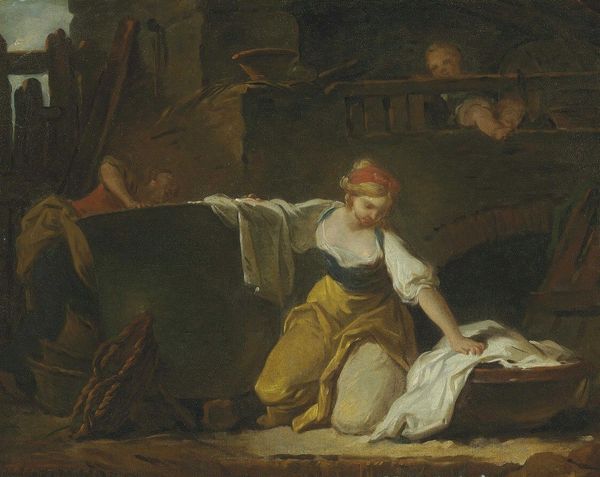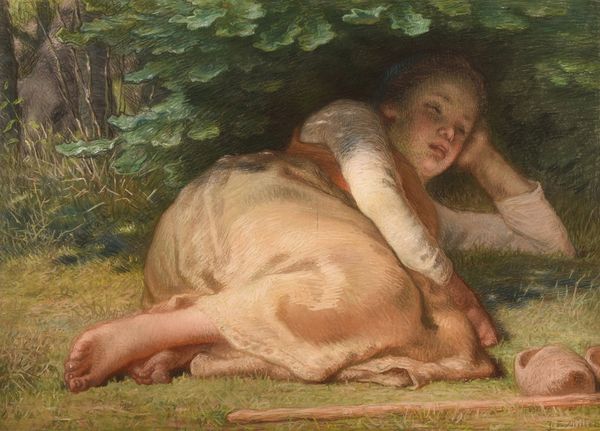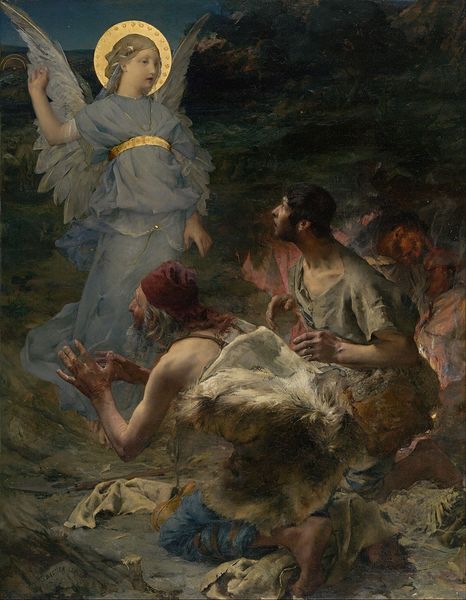
oil-paint
#
allegory
#
baroque
#
fantasy art
#
oil-paint
#
landscape
#
figuration
#
oil painting
#
underpainting
#
history-painting
Dimensions: height 49.5 cm, width 37 cm
Copyright: Rijks Museum: Open Domain
Caesar Boëtius van Everdingen painted "Pan and Syrinx," using oil on canvas, to depict a pivotal moment from Ovid's Metamorphoses. Here, we witness Syrinx, recognizable by the reeds springing from her head, desperately fleeing the amorous pursuit of Pan. The reeds themselves are rich in symbolism, rooted in the ancient world's understanding of transformation. Syrinx's metamorphosis into reeds echoes the themes of metamorphosis and the cyclical nature of life, death, and rebirth. We see echoes of this transformation in other stories—Daphne's transformation into a laurel tree, for example—reflecting the ancient mind's attempt to grasp the immutable laws of nature. These stories tap into our collective memory, revealing our deep-seated fascination with the interplay between humanity and the natural world. The terror in Syrinx's eyes reminds us of the raw, primal emotions that transcend time, engaging us on a subconscious level. Thus, the myth of Pan and Syrinx is not merely a story but a symbol of the eternal dance between desire and transformation, endlessly resurfacing in the human psyche.
Comments
rijksmuseum about 2 years ago
⋮
The eternally lustful god of the woods and fields, Pan, has his sights set on the chaste nymph Syrinx, a follower of the goddess Diana. When Syrinx’s escape is blocked by a river and Pan is about to overpower her, she is transformed into tall reeds. Pan made a set of pipes from them. Van Everdingen placed all of the emphasis on the fleeing Syrinx; Pan can hardly be detected in the dark forest.
Join the conversation
Join millions of artists and users on Artera today and experience the ultimate creative platform.
